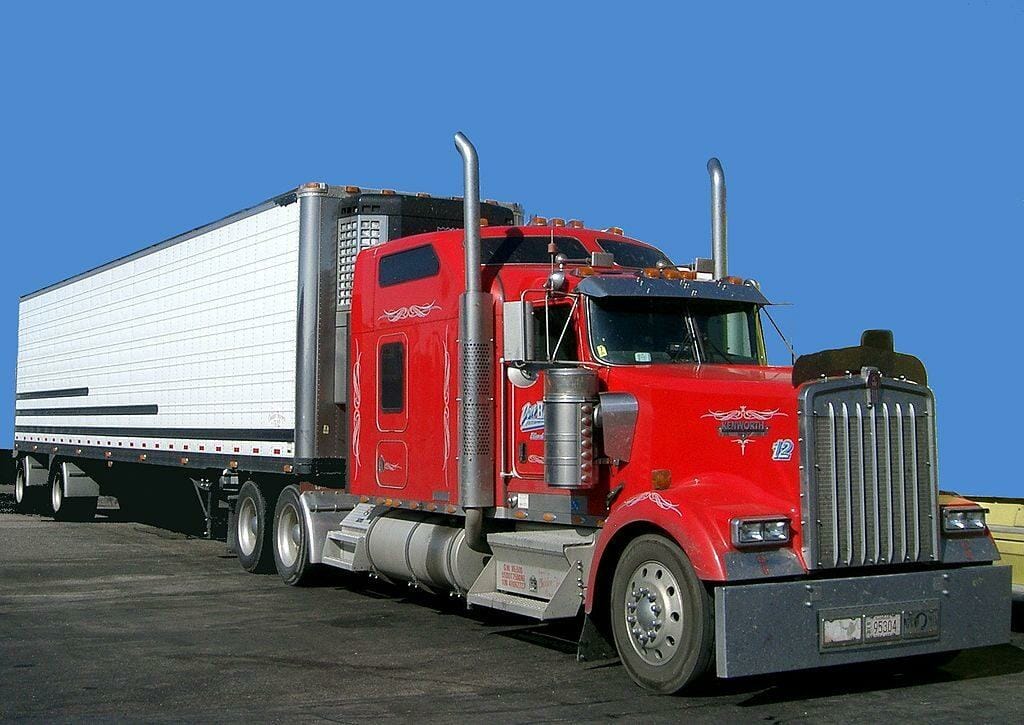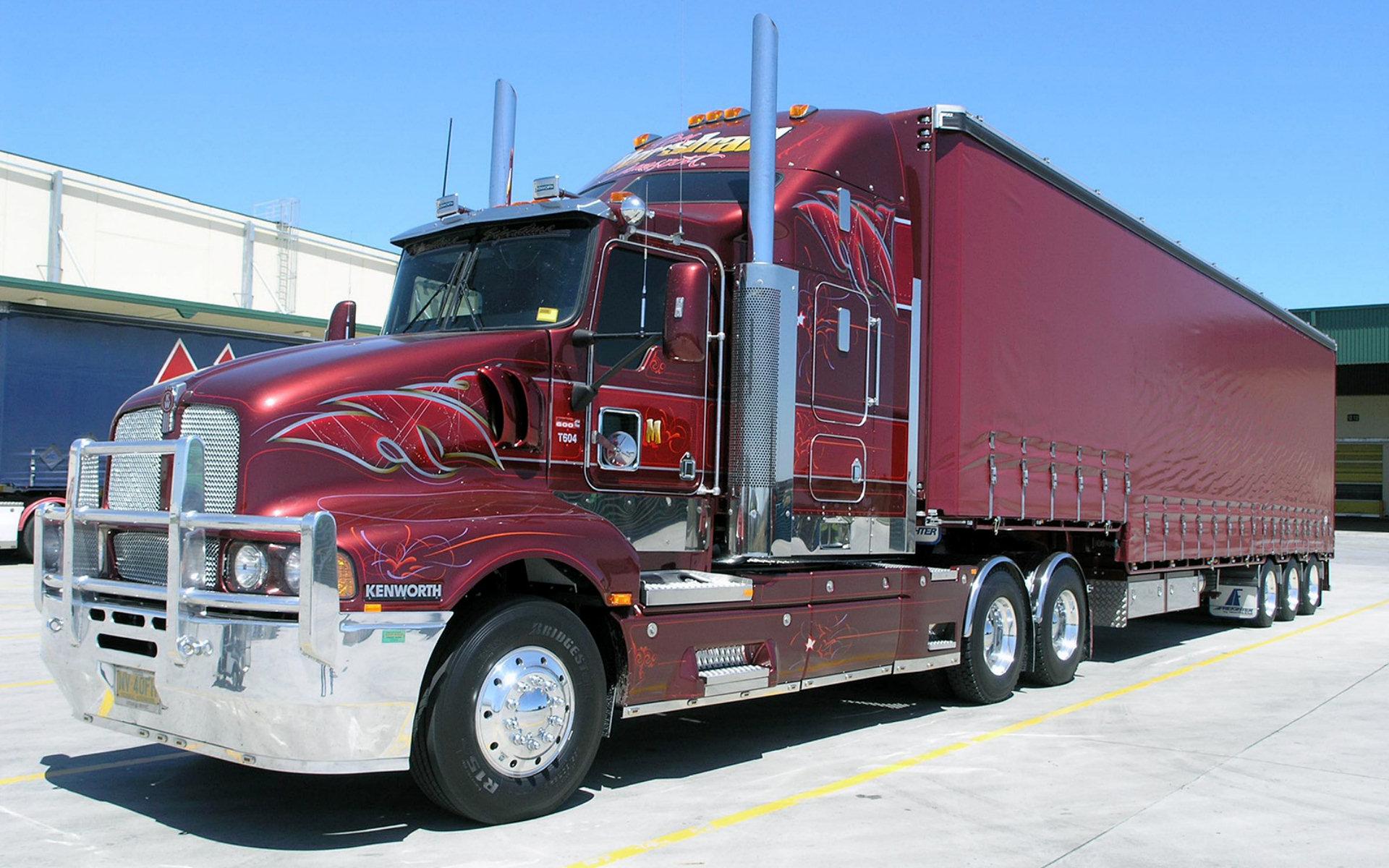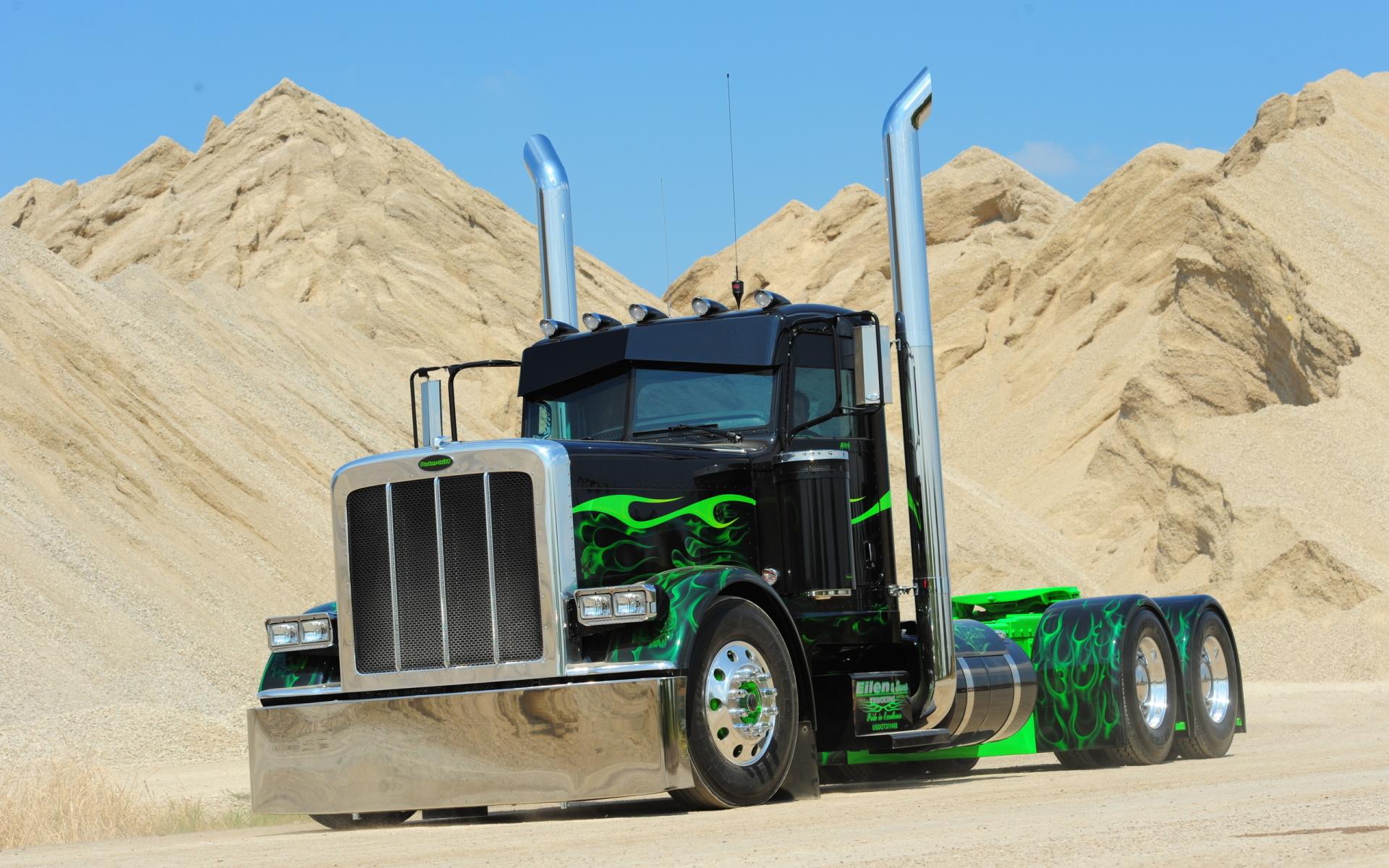Semi Truck Value By VIN: Unlocking the True Worth of Your Commercial Vehicle pickup.truckstrend.com
In the bustling world of commercial trucking, buying or selling a semi-truck is a significant financial decision. Unlike passenger cars, the value of a semi-truck is influenced by a myriad of complex factors, from engine specifications and axle configurations to its operational history and maintenance records. Amidst this complexity, one alphanumeric code stands out as the ultimate key to unlocking a truck’s true worth: the Vehicle Identification Number (VIN).
The VIN is far more than just a serial number; it’s the unique digital DNA of every semi-truck, a 17-character identifier that encodes crucial information about its origin, specifications, and life story. For anyone looking to accurately assess the value of a semi-truck, leveraging its VIN is not just beneficial—it’s absolutely essential. This comprehensive guide will delve into how the VIN serves as the cornerstone for precise semi-truck valuation, empowering buyers, sellers, and industry professionals alike to make informed decisions.
Semi Truck Value By VIN: Unlocking the True Worth of Your Commercial Vehicle
The VIN: Your Truck’s Digital Fingerprint
At its core, the VIN is a standardized global identifier for motor vehicles. For semi-trucks, this 17-character alphanumeric code provides a wealth of information that is indispensable for valuation:
- World Manufacturer Identifier (WMI) – Characters 1-3: Identifies the manufacturer of the vehicle (e.g., 1GV for General Motors Heavy Duty, 3AL for Freightliner, 4US for Kenworth). This immediately tells you the brand, which plays a role in market perception and resale value.
- Vehicle Descriptor Section (VDS) – Characters 4-9: This section describes the general attributes of the vehicle. For a semi-truck, this might include:
- Truck Type: Conventional, cab-over, sleeper, day cab.
- GVWR/GCWR: Gross Vehicle Weight Rating or Gross Combination Weight Rating, indicating the truck’s maximum operating weight, crucial for its intended use.
- Engine Type and Size: Specific engine model, displacement, and often horsepower range. This is a massive value determinant.
- Brake System: Air brakes, hydraulic brakes.
- Axle Configuration: 4×2, 6×2, 6×4, etc., indicating the number of wheels and drive axles, which directly impacts pulling power and stability.

- Vehicle Identifier Section (VIS) – Characters 10-17: This unique section distinguishes one vehicle from another.

- Model Year (Character 10): Crucial for depreciation calculations and understanding the truck’s age.
- Assembly Plant (Character 11): Where the vehicle was manufactured.
- Production Sequence Number (Characters 12-17): The unique serial number for that specific vehicle.

The sheer volume of factual, unalterable data contained within or linked to the VIN makes it the single most reliable source for starting any valuation process.
Unlocking Value: How the VIN Informs Pricing
The VIN acts as a gateway to the granular details that profoundly impact a semi-truck’s market value. Here’s how:
-
Core Specifications Validation: The VIN precisely identifies the original factory-installed components such as the engine make and model (e.g., Cummins X15, Detroit DD15, PACCAR MX-13), transmission type (manual, automated manual, automatic), and axle ratios. These components are significant value drivers, as certain configurations are more desirable for specific operations (e.g., long-haul vs. heavy-haul). Buyers can verify that the truck indeed has the high-demand components advertised.
-
Depreciation and Age Assessment: The VIN’s embedded model year provides an indisputable starting point for calculating depreciation. Newer trucks naturally command higher prices, but the depreciation curve for semi-trucks can be steep in the initial years, then level off.
-
Original Equipment and Optional Features: While not always explicitly detailed in basic VIN decoders, the VIN can often be used by manufacturers or specialized databases to pull up the original build sheet. This reveals factory-installed options like custom sleepers, auxiliary power units (APUs), premium interior packages, or advanced safety features (e.g., collision mitigation systems, lane departure warnings). These additions can significantly boost a truck’s resale value.
-
Recall and Service Bulletin History: The VIN is the direct link to a truck’s recall history. Unresolved recalls can impact safety, performance, and naturally, market value. A VIN check can reveal if all necessary service bulletins and recalls have been addressed, indicating a well-maintained and safer vehicle.
-
The Critical Role of Vehicle History Reports (VHRs): This is where the VIN truly shines as a valuation tool. Services like RigDig, Commercial Motor Vehicle Records (CMR), or even broader databases like NMVTIS (National Motor Vehicle Title Information System) use the VIN to compile comprehensive reports that include:
- Accident History: Dates, severity, and reported damage. A truck with a clean accident history is inherently more valuable. Major accidents, especially those involving frame damage, can drastically reduce value.
- Salvage or Rebuilt Titles: Indicates a truck was declared a total loss by an insurer, severely impacting its value and potentially its ability to be insured or financed.
- Odometer Discrepancies/Tampering: Essential for verifying actual mileage, a primary factor in valuation. Tampering is illegal and can render a truck unsaleable.
- Lien History: Reveals any outstanding loans or financial claims against the truck, which must be cleared before ownership can be transferred.
- Previous Ownership and Usage: Whether the truck was part of a large fleet, a small owner-operator business, or even a rental fleet, which can sometimes give clues about its general care and usage patterns.
- Reported Maintenance and Service Records: Some VHRs can show reported service events, though this is often more complete directly from the original owner or dealer.
Benefits of VIN-Driven Valuation
- Accuracy and Objectivity: Reduces reliance on subjective descriptions or guesswork. The VIN provides verifiable facts about the truck’s specifications and history.
- Fraud Prevention: Uncovers hidden issues like salvage titles, undisclosed accidents, or odometer rollback, protecting buyers from costly mistakes.
- Informed Decision-Making: Equips both buyers and sellers with precise data, allowing buyers to negotiate confidently and sellers to justify their asking price.
- Efficiency: Streamlines the valuation process by providing immediate access to critical data points.
- Facilitates Financing and Insurance: Lenders and insurers rely heavily on VIN-derived data for accurate risk assessment and premium calculations.
Step-by-Step: Valuing a Semi Truck Using its VIN
- Obtain the VIN: The VIN is typically found on the driver’s side dashboard (visible through the windshield), on a sticker inside the driver’s side door jamb, on the truck’s title, or registration documents.
- Decode the VIN: Use a reliable online VIN decoder (many free ones are available, including NHTSA’s official decoder or manufacturer-specific sites). This will give you the basic factory specifications like make, model, year, engine type, and GVWR.
- Run a Comprehensive Vehicle History Report (VHR): This is the most crucial step. Subscribe to a commercial VHR service like RigDig, Commercial Motor Vehicle Records (CMR), or other industry-specific databases. Input the VIN to generate a detailed report on accidents, title issues, odometer readings, and ownership history.
- Assess Current Condition and Maintenance (with VIN context): While not directly from the VIN, the VIN validates the truck’s identity for its specific maintenance history. Review physical condition alongside the VHR. Ask the seller for detailed maintenance records, which can often be linked to the VIN.
- Compare with Market Comparables: Use the VIN-derived specifications (make, model, year, engine, transmission, sleeper size) to search for similar trucks currently for sale on major commercial truck marketplaces (e.g., TruckPaper.com, CommercialTruckTrader.com, Ritchie Bros. Auctioneers, IronPlanet). Look at asking prices and, if possible, recent sales data.
- Factor in Regional and Economic Conditions: Consider the local demand for that specific truck type and any broader economic trends that might affect prices (e.g., fuel prices, freight rates).
Challenges and Solutions
- Data Availability: Not all historical data, especially detailed maintenance records from smaller shops, might be publicly available through VHRs.
- Solution: Always request the owner’s personal maintenance logs. Conduct a pre-purchase inspection by an independent, qualified mechanic who can spot issues not reported in VHRs.
- Decoding Nuances: Some VIN characters can be specific to manufacturer internal codes that standard decoders might not fully interpret.
- Solution: If in doubt, contact the manufacturer directly with the VIN or consult a reputable dealership for a build sheet.
- Interpreting VHRs: A VHR might report "minor accident" without detailing the extent of damage.
- Solution: Use the VHR as a red flag system. If an incident is reported, specifically ask the seller about it and ensure a thorough physical inspection focuses on those areas.
- Market Volatility: The value of semi-trucks can fluctuate based on supply, demand, and economic factors.
- Solution: Get multiple valuations, monitor recent sales, and understand current market trends rather than relying on outdated price guides.
Practical Advice for Buyers and Sellers
For Buyers:
- Always demand the VIN: Do not consider purchasing a truck without first obtaining and thoroughly checking its VIN.
- Run multiple VHRs: Different services might pull data from different sources, offering a more complete picture.
- Cross-reference all information: Ensure the truck’s physical attributes match what the VIN decoder and VHR reveal.
- Budget for a Pre-Purchase Inspection (PPI): Even with a clean VIN report, a professional inspection is crucial to assess current mechanical condition and identify wear-and-tear not reflected in history reports.
For Sellers:
- Have the VIN readily available: Make it easy for potential buyers to perform their due diligence.
- Be transparent: Proactively provide a recent VHR. Honesty about the truck’s history builds trust and can prevent issues down the line.
- Document all maintenance: Keep meticulous records of all repairs and services, as these significantly add to a truck’s perceived value and can be verified via the VIN through manufacturer service networks.
- Price competitively: Use VIN-derived information to research comparable sales and price your truck realistically based on its actual condition and specifications.
Factors Influencing Semi Truck Value Derived from VIN Data: A Conceptual Price Guide
While a VIN doesn’t directly spit out a price, the data it reveals, when combined with market conditions, guides the valuation. The table below illustrates how different VIN-derived profiles typically map to estimated value ranges. These are illustrative estimates and can vary significantly based on mileage, actual condition, region, and market demand.
| VIN-Derived Profile (Key Attributes) | Estimated Value Range (USD) | Notes |
|---|---|---|
| "Premium" | $100,000 – $180,000+ | VIN Reveals: Latest model year (1-3 years old), top-tier manufacturer (e.g., Kenworth, Peterbilt, Volvo, Freightliner), preferred engine (e.g., X15, DD15, MX-13) and transmission (automated manual), desirable axle configuration (e.g., 6×4), large sleeper. VHR Shows: Absolutely clean history, zero accidents, single owner, low mileage (under 300k miles), all recalls addressed. Often still under powertrain warranty. |
| "Good Condition" | $50,000 – $99,999 | VIN Reveals: Mid-age (4-7 years old), reputable brand, common and desirable engine/transmission package, standard sleeper. VHR Shows: Minor to no reported accidents (cosmetic only), clean title, moderate mileage (300k-600k miles), potentially 1-2 owners. Well-maintained fleet or owner-operator truck. May require minor reconditioning. |
| "Average" | $25,000 – $49,999 | VIN Reveals: Older age (8-12 years old), mixed brand/specs, standard engine/transmission. VHR Shows: Potentially 1-2 minor accidents, clean title, higher mileage (600k-900k miles), multiple owners. Likely requires some immediate maintenance or repairs (e.g., tires, brakes, minor engine work). Suitable for owner-operators on a budget or for specific, less demanding regional routes. |
| "Utility/Bargain" | $10,000 – $24,999 | VIN Reveals: Very old (13+ years old), less desirable or older generation engine/transmission, possibly less common configurations. VHR Shows: Higher mileage (900k+ miles), multiple owners, potentially a history of minor incidents, but generally a clean title. Significant wear and tear expected. Often purchased for specific, low-demand tasks, or for an owner-operator with a strong mechanical background willing to invest in repairs. |
| "Distressed/Salvage" (Any Age) | < $10,000 (or zero) | VIN/VHR Reveals: Major accident (e.g., rollovers, severe collision), flood damage, fire damage, theft recovery with significant damage, odometer tampering, unresolved liens, or a salvage/rebuilt title. Value is heavily impacted by the extent of damage and legal/title issues. Often sold for parts, scrap, or to specialized rebuilders. May be difficult or impossible to register, insure, or finance, effectively rendering its operational value very low or non-existent. |
Frequently Asked Questions (FAQ)
Q1: Can I get a free semi-truck valuation by VIN?
A1: You can get a free VIN decode, which provides basic specifications. However, comprehensive vehicle history reports (VHRs) that detail accidents, liens, and title issues, which are crucial for true valuation, typically come with a fee from specialized commercial truck reporting services.
Q2: Is VIN decoding enough to determine a truck’s value?
A2: No. VIN decoding provides the truck’s factory specifications. To determine value, you must combine this information with a vehicle history report (VHR) to understand its past, a physical inspection to assess its current condition, and market research to see what comparable trucks are selling for.
Q3: What if the VIN is missing or unreadable?
A3: This is a major red flag. Do not proceed with the purchase. A missing or unreadable VIN could indicate a stolen vehicle, a tampered vehicle, or severe structural damage. Always walk away or involve law enforcement if you suspect foul play.
Q4: Does the VIN tell me about the truck’s maintenance history?
A4: Not directly. The VIN itself doesn’t store maintenance records. However, some vehicle history reports (VHRs) linked to the VIN may include reported service events if they were performed by a large network or dealership that reports to these databases. The best source for maintenance history is always the seller’s detailed records, which can be verified by cross-referencing VIN with service invoices.
Q5: How accurate are VIN-based valuations?
A5: VIN-based valuations are highly accurate for the objective data they provide (specifications, history). They form the factual foundation for valuation. However, the final value is always a combination of this factual data, the truck’s current physical condition (which requires a hands-on inspection), and prevailing market supply and demand.
Q6: What’s the difference between a VIN decoder and a Vehicle History Report (VHR)?
A6: A VIN decoder interprets the 17 characters of the VIN to tell you basic factory information about the truck (make, model, year, engine, plant, etc.). A Vehicle History Report (VHR) uses the VIN to pull data from various databases (DMVs, insurance companies, police reports, repair shops) to provide a comprehensive history of the truck, including accidents, title issues, odometer readings, and previous ownership. Both are essential for a complete valuation.
Conclusion
The VIN is the undisputed single most important piece of information when evaluating a semi-truck. It’s the immutable record that links a specific vehicle to its factory specifications, its historical events, and its legal standing. By diligently utilizing the VIN through decoding and comprehensive history reports, both buyers and sellers can navigate the complex semi-truck market with unparalleled transparency and confidence. In an industry where every dollar counts, leveraging the power of the VIN is not just smart business—it’s essential for unlocking the true worth of these mighty machines.
